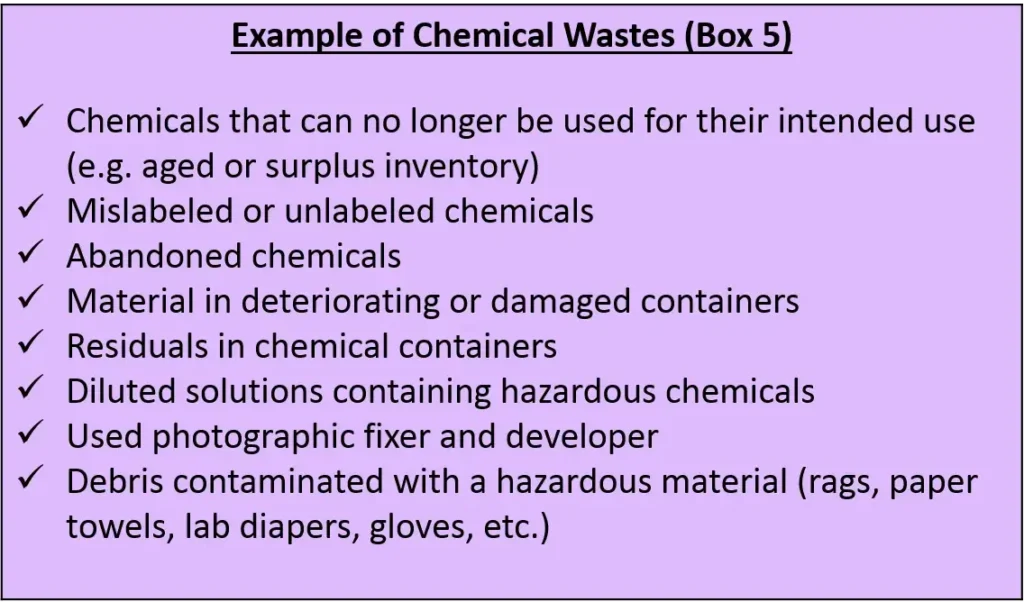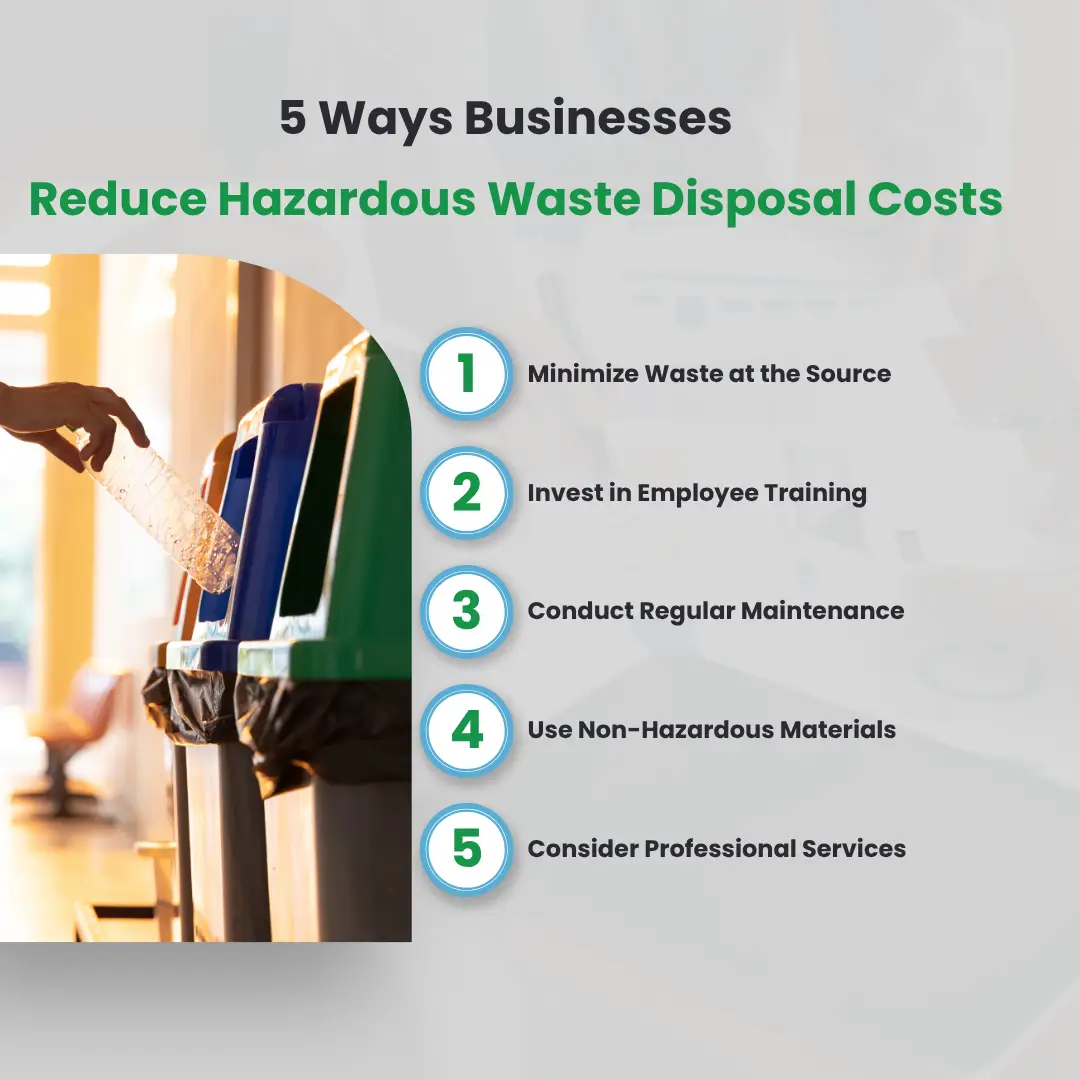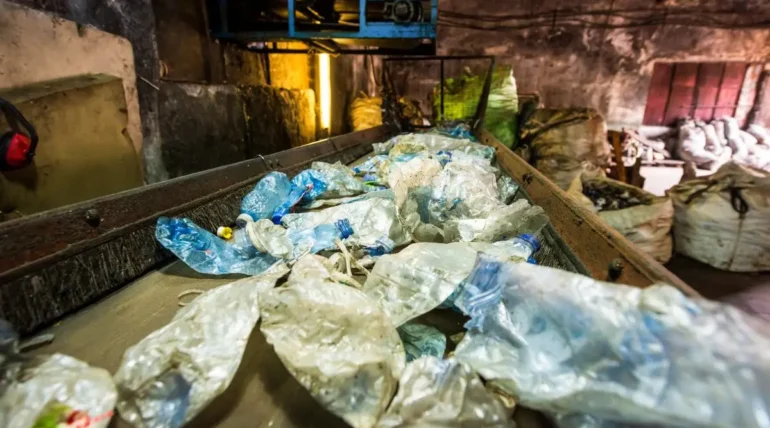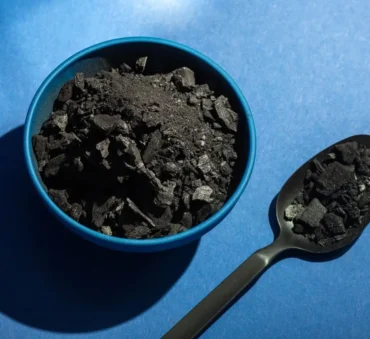When improperly managed, hazardous waste poses a serious threat to human health and the environment. Even more, mishandling such waste can result in legal implications and penalties—and with almost 13 tons of hazardous waste produced every second, businesses must be aware of how to manage these materials safely.
For the same reason, all businesses—no matter the industry—must understand the cost of hazardous waste disposal to better manage expenses while minimizing their environmental footprint.
This blog explores the average cost of hazardous waste disposal, uncovering the hidden costs many businesses overlook and strategies for reducing costs.
Key Takeaways
- Hazardous waste disposal typically ranges from $0.10 to $10 per pound, but final costs depend on the type and quantity of waste.
- The more hazardous or heavily regulated a material is, the higher its disposal cost will be due to specialized handling, transportation, and treatment.
- The more waste you have, the higher the total cost—though smaller amounts often carry higher per‑pound rates than bulk loads due to minimum service fees and single‑container pickups.
- The hidden costs of hazardous waste disposal include regulatory documentation fees, emergency response services, on‑site storage costs, employee training expenses, penalties for improper waste disposal, and environmental damage from mismanagement.
What is Hazardous Waste?
Hazardous waste is any discarded material that can potentially harm humans, other living organisms, or the environment. As described by ScienceDirect, hazardous waste exhibits at least one of four characteristics: ignitability, corrosivity, reactivity, or toxicity.
Examples of hazardous commercial waste include solvents, cleaning agents, electronic waste, clinical waste, pesticides, and other industrial byproducts.
That said, hazardous waste falls into different categories depending on its source, chemical composition, and potential risks—impacting both the methods of disposal and the overall cost of hazardous waste disposal.
Types of Hazardous Waste
Hazardous waste can be broken down into different categories. Why is this important to know?
Because the type of waste you’re handling can directly affect hazardous waste disposal fees, and knowing the difference can help your company budget more accurately.
The 3 most common types of waste include:
1. Chemical Waste
Chemical waste is any material—solid, gaseous or liquid hazardous waste—that contains or has been contaminated by chemicals. This includes a range of products, such as batteries, waste oils, laboratory chemicals, and so much more.
The image below—provided by the U.S. Environmental Protection Agency—shows a list of additional chemical waste examples:

There are various methods of chemical waste disposal, including incineration, specialized landfills designed for chemical waste, and chemical treatment to neutralize or stabilize the waste.
Businesses that generate chemical waste must consider key regulatory frameworks—such as the Resource Conservation and Recovery Act and the Toxic Substances Control Act—to ensure compliance.
It’s important to note that non-hazardous chemical waste, such as cooking oils and non-toxic cleaning solutions, must also be properly disposed of to prevent pollution and other adverse effects.
2. Biological Waste
Cornell University provides valuable insight into what biological waste is, stating that it’s “any material that has encountered or contains a biohazardous agent. In New York State, the Department of Environmental Conservation (DEC) defines biohazardous or regulated medical waste (RMW) as ‘waste which is generated in the diagnosis, treatment or immunization of human beings or animals, in research pertaining thereto, or in production and testing of biologicals.’”
Examples of biological waste include urine, feces, blood, animal carcasses (except those containing radioactive materials), contaminated animal bedding, and more.
There are different ways to dispose of biological waste, with common methods including chemical disinfection, heat treatment through autoclave and incineration, and UV.
3. Radioactive Waste
Radioactive waste is generated as a by-product of producing or using radioactive materials. This type of waste is commonly produced by industries such as mining, nuclear power generation, defense, medicine, and certain types of scientific research.
Radioactive waste is typically classified as low-level, intermediate-level, or high-level, dependent primarily on its level of radioactivity.
To ensure these materials are managed safely, the EPA sets standards under several laws—including the Nuclear Waste Policy Act and the Energy Policy Act of 1992—which guide waste management and disposal at specific sites.
Average Cost of Hazardous Waste Disposal
The ever-important question is, what is the average cost of waste management?
We hate to break it to you—but there’s no straightforward answer to this. For that reason, it’s easier to compare hazardous waste disposal cost per pound, which typically ranges from $0.10 to $10.
We understand this is a huge range, so let’s look at the top factors affecting waste disposal costs:
Type of waste: As mentioned above, hazardous waste varies in type, each requiring specific handling and management methods. As you might expect, the more hazardous or heavily regulated a material is, the higher its disposal cost will be due to specialized handling, transportation, and treatment.
Quantity of waste: Many waste management companies base their disposal fees on the weight of the waste being handled. In other words, the more waste you have, the higher the total cost. However, smaller amounts may have higher per-pound rates than bulk loads, as minimum service fees and single-container pickups often drive up the cost for low-volume disposals.
Let’s look at the average disposal costs for common types of commercial waste:
| Material | Disposal Cost |
|---|---|
| Batteries | $0.10 – $10.25 |
| Gasoline/Fuel | $0.80 – $3 |
| Mercury | $7.50 – $11 |
| Paints | $0.80 – $3 |
| Solvents | $0.80 – $4 |
The table above only covers a small portion of the materials a company may produce. However, things like hazardous liquid waste disposal, cosmetic disposal, and disposal of cleaning products each have different hazardous waste disposal cost per ton, meaning total disposal costs can vary significantly depending on the specific materials involved.
That said, we understand how important it is for your company to have an accurate estimate of hazardous waste removal costs. Contact us to discuss your waste type and quantity, and we’ll provide you with a quote.
DIY vs. Outsourcing to a Professional
Aside from costs, many people wonder, is this something we can do ourselves?
And while the answer is technically yes, it’s important to understand what’s at stake. Hazardous waste isn’t just messy—it’s highly regulated. A single misstep, like improper labeling or disposal, can lead to hefty fines or even legal trouble.
Hiring a professional takes that stress off your shoulders. Experts in waste management know the rules inside and out, handle all the paperwork, and ensure every step stays compliant.
It’s not just about convenience—it’s about protecting your health, the environment, and your wallet.
The Hidden Cost of Hazardous Waste Disposal
When your company is planning for hazardous waste disposal, there are potential hidden costs that you should be aware of:
- Regulatory documentation fees: While required paperwork varies by location, companies may incur costs for permits and compliance documentation needed before waste can be transported.
- Emergency response services: Spills, leaks, or other incidents that occur on-site during storage or loading can lead to added expenses, including cleanup costs, emergency response services, and potential regulatory fines.
- On-site storage costs: Companies may need to invest in storage solutions that comply with regulatory standards and could incur additional fees for extended hazardous waste storage prior to removal.
- Employee Training Expenses: Employees should undergo hands-on training to ensure safety and compliance with local laws. While this training adds to overall expenses, it’s critical for preventing accidents and avoiding regulatory penalties.
- Improper Waste Disposal Fees: Costs from problems like missed pickups, contaminated waste loads, or incorrect separation can result in delays or regulatory penalties.
- Environmental costs: Collecting, transporting, treating, and disposing of hazardous waste can lead to soil and water contamination, resource depletion from energy-intensive treatment methods, and health risks if not properly managed. Partnering with a company that specializes in hazardous solid and liquid waste disposal helps minimize environmental impact.
5 Ways Businesses Can Reduce Hazardous Waste Disposal Costs
Want to keep contaminated waste disposal costs down?

Consider the following tips:
1. Minimize Waste at the Source
Reducing the quantity and toxicity of waste produced at the source should be a top priority for all businesses. There are multiple ways to achieve this:
- Perform a waste audit: A waste audit is a formal, structured process used to quantify the amount and types of waste being generated by an organization. These audits provide companies with valuable insights into how they can improve their processes, minimize waste, use their resources more efficiently, and reduce the cost of hazardous waste disposal.
- Adopt the lean manufacturing principles: Lean manufacturing focuses on improving efficiency while reducing waste. By applying 5 key principles—value, value stream, flow, pull, and perfection—companies can accelerate production while optimizing processes. For example, you can apply lean principles by reducing overproduction of chemicals, reusing solvents in multiple processes, or streamlining storage layouts to prevent spills and contamination.
- Employee training: Training your employees in waste reduction and proper handling can improve sustainability while reducing waste at the source. We won’t give away too much yet, as we’ll discuss this further in the next section.
2. Invest in Employee Training
Proper training ensures the health and safety of workers, workplaces, and the environment. Whether your employees are using hazardous materials in their day-to-day workflows, helping separate them for disposal, or managing storage and compliance, proper instruction reduces risks and helps you avoid fees for noncompliance.
Employers must also ensure emergency response and cleanup workers clearly understand their roles in managing unexpected releases of hazardous substances.
While training requires an upfront investment, it can significantly lower long‑term costs by preventing accidents, regulatory fines, and costly cleanup efforts.
3. Conduct Regular Maintenance
Regularly performing maintenance on your systems, equipment, and infrastructure helps prevent leaks, reduce downtime, and avoid costly repairs or regulatory penalties.
Proactive maintenance also extends the lifespan of equipment, ensuring safer operations and more predictable disposal planning over time—a win-win for your company.
4. Use Non-Hazardous Materials
Companies that want to reduce biohazard waste disposal costs can modify their processes to use less harmful substances. This may involve redesigning their product or evaluating whether they could use an alternative raw material.
For example, a manufacturing company might switch from using solvent-based paints to water-based alternatives, significantly cutting hazardous waste volumes and related disposal costs.
5. Consider Professional Services
You don’t have to do this alone—especially since hazardous materials require strict handling, specialized equipment, and in-depth knowledge of regulatory standards. Whether you require liquid waste disposal management, solid waste solutions, or a combination of both, partnering with experienced professionals ensures safe, compliant, and cost‑effective disposal.
At Shapiro, our services take the headache out of hazardous waste management, helping you keep costs down while improving sustainability.
Conclusion
There are various factors that affect the cost of hazardous waste disposal, with type and quantity of waste playing the biggest role. While many companies are worried about these costs, proper waste disposal is key to protecting community and environmental health—and the tips in this article can help lower your overall costs.
If you’re interested in partnering with a waste management company that specializes in hazardous waste, we’d love to craft a tailored strategy that fits your unique business needs.
Contact us today to find out how our hazardous waste management solutions can simplify compliance and reduce your disposal costs.
Baily Ramsey, an accomplished marketing specialist, brings a unique blend of anthropological insight and marketing finesse to the digital landscape. Specializing in educational content creation, she creates content for various industries, with a particular interest in environmental initiatives.



